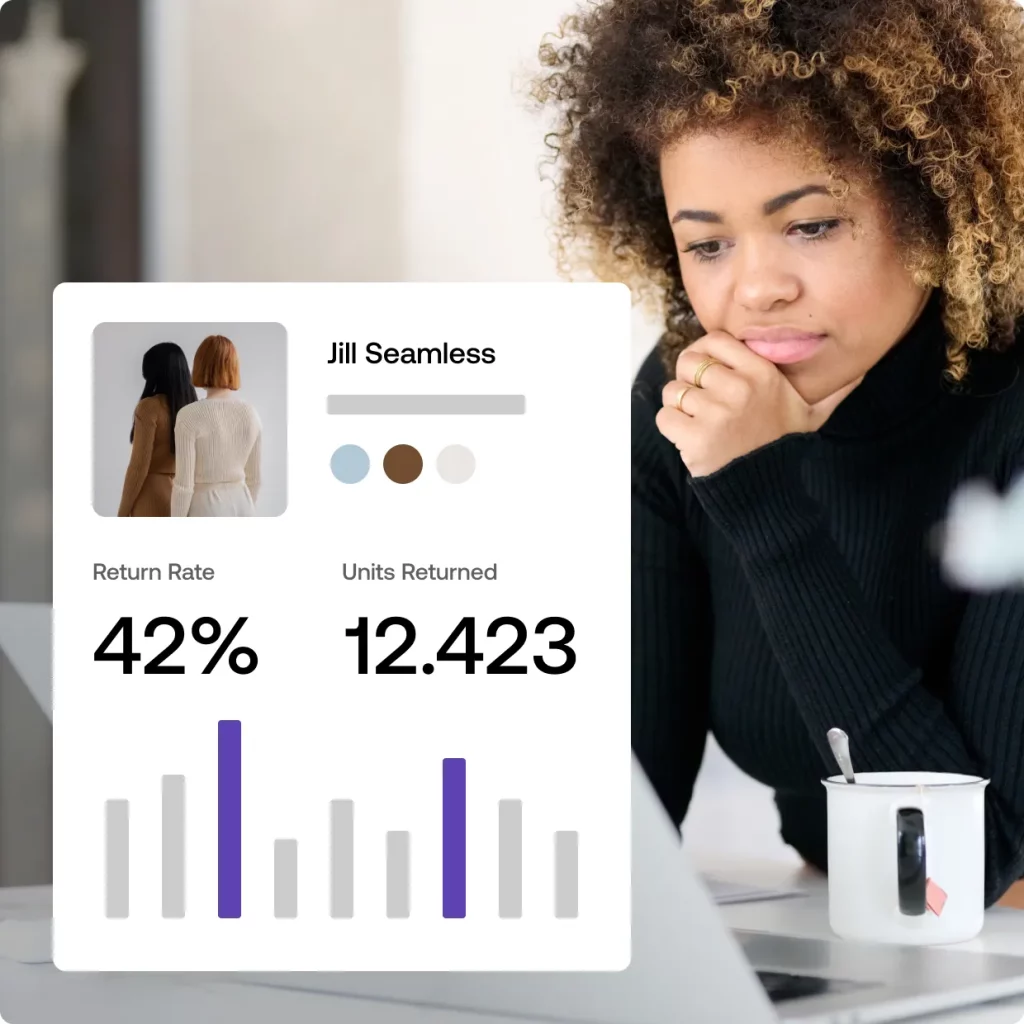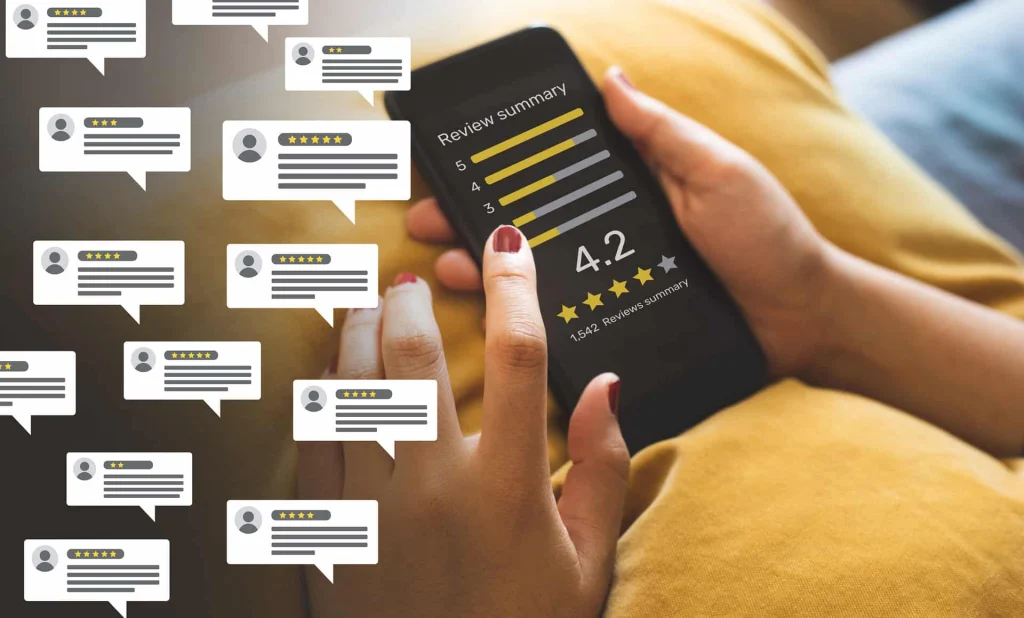Customer Lifetime Value and the Impact of Returns

Welcome to our beginner’s guide to, Understanding Customer Lifetime Value in Ecommerce. This blog delves into how to use customer lifetime value (CLV) to drive success for your Shopify ecommerce store.
We’ll start by exploring the relationship between returns data and CLV. Unknown to many ecommerce merchants, returns data holds valuable insights that guide data-backed business decisions to improve customer lifetime value. Insights derived from returns data can be used to increase total revenue, improve the user experience (UX), and enhance the brand loyalty of your Shopify store.
In this article, we will explore strategies for leveraging returns data to improve the performance of your Shopify store. Plus, gain access to a free CLV calculator to understand your customer lifetime value and aid in decision-making.
What Your Returns Data Can Tell You About Customer Lifetime Value
Returns data in ecommerce has immense value. It holds insights into customer behavior and preferences. Collecting data on returns and analyzing it to better understand product performance and customer behavior helps ecommerce merchants gain a clear picture of what’s happening within their business.
Utilizing this data significantly increases customer lifetime value (CLV) because it takes customer preferences and experiences into account when making adjustments to improve the shopper experience. Returns data unlocks patterns and trends that weren’t easy to see before. This information can be used to understand your customers’ purchasing habits, satisfaction levels, and brand loyalty.

Understand Why Customers are Returning Products
One key aspect to focus on when examining returns data is identifying the reasons behind returns. This information can shed light on product quality issues, sizing discrepancies, or even mismatches between existing customer expectations and reality.
Shopify merchants who take a proactive approach to address these issues end up reducing return rates, saving potentially lost sales, and improving their customer relationships. Examples of such steps include:
- Improving product descriptions
- Providing more accurate sizing guides
- Enhancing quality control processes
This can ultimately reduce returns. It can also reduce customer acquisition costs. Additionally, it can increase customer satisfaction and repeat purchases.
Returns data can also help you identify customer segments that have a higher propensity for returns.
Segment Your Customer Base According to Their Returns Behavior
Returns data also gives you the power to segment your customers based on their returns behavior. Whether it’s by returns frequency, return type, or return reason, segmenting your customers based on their returns behavior allows you to customize your digital marketing strategies and communication efforts.
This empowers you to cater to the specific needs and concerns of each customer segment. For example, you could incentivize exchanges for customers who list their return reason as “Wrong Size” or “Wrong Color”. Offering customers an exchange when they try to process a refund could help save the sale while giving shoppers the products they actually want.
This tailored approach not only enhances customer satisfaction but also improves overall conversion rates. Customization in digital marketing enables merchants to proactively address challenges and deliver a more personalized and effective marketing experience.
Provide Accurate Sizing Information & Personalized Recommendations
Your returns data may also uncover that certain products have an unusually high return rate due to sizing issues. This may indicate that there is some miscommunication between customer expectations and the product itself.
Whether you update product images or add a sizing chart to the product description, your returns data could help you recognize when certain product pages need to be enhanced.
It could also help you incorporate personalized product recommendations to the shopping experience, based on previous returns behavior. If you notice many people who return one product end up buying a different variation of that product, then you could offer that variation as an exchange when customers request to return that product in the future.
This will help reduce your churn rate and the number of overall returns, ultimately improving CLV.
Analyze Return Data Over Time
While your returns data will always be chalk-full of insights, the power of those insights only grow with time. The more returns you have information on, the more patterns and trends you’ll be able to verify about your customer’s shopping behavior.
This enables you to track the success of your initiatives. These initiatives are aimed at reducing returns and increasing the average customer lifetime value.
By analyzing the data, you can identify successful strategies and make informed decisions to optimize your business processes. Understanding the correlation between returns and customer behavior empowers you to refine your initiatives, improve customer satisfaction, and ultimately enhance the long-term value each customer brings to your business.
Monitor Return Rates, Return Reasons, & Customer Satisfaction Metrics
The ability to assess the impact of implemented changes is crucial in optimizing CLV. While returns can provide raw data on customer returns behavior, it’s important to know what metrics to pay attention to in order to be able to extract valuable insights.
Merchants should be constantly monitoring return rates, return reasons, and other customer satisfaction metrics to build a clear picture of the customer experience and product performance. This approach uses predictive CLV and returns data to help you improve your strategies. This leads to better customer experiences, increased loyalty, and a higher Customer Lifetime Value (CLV).
By iterating this process, continuously refining strategies based on returns data, businesses can create a valuable customer base. This iterative approach ensures ongoing improvements and a constant focus on maximizing customer value and long-term success.
The Impact of Returns on Customer Lifetime Value
Returns can have a significant impact on customer lifetime value (CLV) in the ecommerce industry.
When customers return products, costs associated with logistics and processing are incurred. This also impacts the customer experience and their perception of your brand. These negative experiences can lead to decreased customer satisfaction, reduced trust, and ultimately, lower CLV.
One major challenge posed by returns is the potential damage to customer loyalty. Customers may abandon future purchases and search for alternatives elsewhere if they have difficulties or frustrations during the return process.
To mitigate this, it is crucial to streamline the return process, making it convenient, hassle-free, and transparent for customers. Some steps include:
- Provide clear return policies and return instructions.
- Offer prepaid Shopify return labels.
- Ensure prompt refunds.
These steps can minimize the negative impact of returns on customer satisfaction and loyalty.
Another way returns can impact CLV is through the potential loss of future sales. When customers return products, it disrupts their journey toward becoming repeat buyers.
However, by focusing on exceptional post-return experiences, you can turn returns into opportunities for re-engagement and upselling. Personalized follow-up communication can help retain customers and increase their CLV.
Additionally, offering exclusive discounts on future purchases or suggesting alternative products can also have a positive effect.
It’s important to recognize that returns provide valuable feedback about your products and services.
By analyzing return data, you can identify recurring issues or patterns, allowing you to address root causes and improve your offerings.
This approach of continuous improvement reduces returns and improves product quality. This enhances customer satisfaction and increases Customer Lifetime Value (CLV) in the long run.
Shopify Customer Lifetime Value (CLV) Free Calculator
The Shopify CLV Calculator by ReturnLogic is designed to help ecommerce merchants. It helps you determine the projected revenue you can get from each customer during their whole lifecycle.
By inputting key metrics, such as average order value, purchase frequency, and customer retention rate, the calculator will generate an estimated customer lifetime value.
This estimation provides a baseline for understanding the financial impact of customer relationships that’ll help guide strategic planning and marketing efforts. This segmentation enables you to tailor your campaigns, offers, and communication to maximize CLV and drive income.
The Shopify CLV Calculator can be integrated with other analytics tools and platforms. Combine CLV insights with data from sources such as Google Analytics or Shopify’s built-in analytics to get a thorough understanding of your customers. Additionally, you will be able to identify their value to your business.
You can experiment with different scenarios and segment customers based on CLV. This can help you make data-driven decisions to optimize your Shopify store’s profits and long-term success.
Can Ecommerce Returns Help Increase Customer Lifetime Value?

Exceptional return experiences have the potential to turn dissatisfied customers into loyal advocates.
Providing hassle-free returns, proactive communication, and timely refunds creates a positive brand perception. Even when customers return items, this perception is maintained.
Customers appreciate a seamless return process. They are more likely to view your brand as reliable and focused on customer satisfaction. This positive returns experience increases the chances of them becoming repeat customers, ultimately boosting their CLV.
Post-return marketing strategies play a crucial role in increasing CLV. After a return, it is important to stay connected with customers and nurture the relationship.
Here are some examples of marketing strategies used to increase Shopify customer LTV:
- Personalize follow-up emails or targeted ads. Highlight relevant products or exclusive offers. This can re-engage customers and encourage them to make more purchases.
- Analyze return data to classify customers. Consider their return behavior, preferences, and demographics. This will enable you to create more effective post-return marketing strategies.
- Analyze return data to identify trends and common reasons for returns. Returns management software provides valuable insights into customer preferences, pain points, and expectations.
This information can be used to inform product development, inventory management, and business strategies. We can reduce returns and improve customer satisfaction and CLV by making changes to product descriptions, sizing guides, and materials quality. This can all be done based on return data.
Returns also offer an opportunity to upsell or cross-sell to customers. When processing a return, you can recommend alternative or complementary products that align with their preferences. This is your opportunity to showcase relevant items and highlight the value they bring.
This will increase the average order value. It could even turn a return into a more profitable transaction. This not only enhances CLV but also improves overall revenue and customer retention.
Improve CLV with ReturnLogic
Contrary to popular belief, ecommerce returns can actually help increase customer lifetime value (CLV) when managed strategically. Returns provide a chance to interact with customers during a crucial step in their shopping experience. This can create a good impression, which can lead to loyalty and more purchases.
Ecommerce returns can be leveraged as a means to increase customer lifetime value. By analyzing returns data, ecommerce merchants can provide exceptional return experiences to transform returns from a potential drawback into a catalyst for customer loyalty and long-term profits.
Shopify merchants who implement these targeted post-return marketing strategies create a competitive advantage while also increasing brand loyalty. Utilizing returns data for business improvements is the secret to enhancing customer lifetime value.
Interested in learning more about how your returns impact CLV? Schedule a consultation with a return expert to learn more!
Ready to transform the way your team handles returns?
Talk to a returns specialist to see if you’re a good fit!






